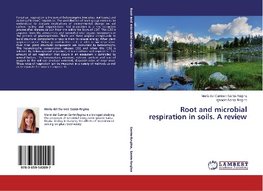
-
 Anglický jazyk
Anglický jazyk
Root and microbial respiration in soils. A review
Autor: María del Carmen Santa-Regina
Forest soil respiration is the sum of heterotrophic (microbes, soil fauna) and autotrophic (root) respiration. The contribution of each group needs to be understood to evaluate implications of environmental change on soil carbon cycling and sequestration.... Viac o knihe
Na objednávku, dodanie 2-4 týždne
50.85 €
bežná cena: 56.50 €
O knihe
Forest soil respiration is the sum of heterotrophic (microbes, soil fauna) and autotrophic (root) respiration. The contribution of each group needs to be understood to evaluate implications of environmental change on soil carbon cycling and sequestration. Soil respiration is a key ecosystem process that releases carbon from the soil in the form of CO2. This CO2 is acquired from the atmosphere and converted into organic compounds in the process of photosynthesis. Plants use these organic compounds to build structural components or respire them to release energy. When plant respiration occurs below-ground in the roots, it adds to soil respiration. Over time, plant structural components are consumed by heterotrophs. This heterotrophic consumption releases CO2 and when this CO2 is released by below-ground organisms, it is considered soil respiration. The amount of soil respiration that occurs in an ecosystem is controlled by several factors. The temperature, moisture, nutrient content and level of oxygen in the soil can produce extremely disparate rates of respiration. These rates of respiration can be measured in a variety of methods as well as to separate the source components.
- Vydavateľstvo: LAP LAMBERT Academic Publishing
- Rok vydania: 2014
- Formát: Paperback
- Rozmer: 220 x 150 mm
- Jazyk: Anglický jazyk
- ISBN: 9783659540097












